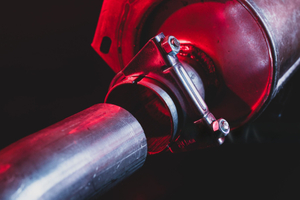In the hidden corners of modern industry and daily life, pipeline systems silently bear the heavy responsibility of fluid transportation. When we turn on a kitchen faucet, clear tap water meanders along the pipes; when machinery roars in a factory, various raw materials shuttle orderly between equipment through pipelines.
Behind these seemingly ordinary scenes, there is an unremarkable yet vital component quietly at work - the elbow. This seemingly simple pipe fitting, with its precise "turns," enables fluids to transform from straight lines to curves in the pipeline network, serving as a key hub connecting industrial civilization and daily life. This article will introduce you to elbows and help you understand their clever applications in life, industry, and other fields.

What is the Elbow?
Elbows are a type of pipe fitting in pipeline systems, playing an indispensable role in many scenarios. Their core functions include reducing fluid resistance, optimizing space layout, and adapting to complex installation environments. An elbow is a pipe fitting used to change the direction of fluid in a pipeline system.
It can connect two pipes with the same or different nominal diameters, enabling the pipeline to make turns at 90°, 45°, 180°, and various specific angles, thus achieving the purposes of pipeline redirection, branching, or confluence.

The Classification of Elbow
Although elbows are unremarkable, they come in many types under different application conditions. Generally, we distinguish the types of elbows according to their materials.
Stainless steel elbows: Formed by hot pushing or stamping, with uniform wall thickness and smooth surface.
304 and 316L have strong corrosion resistance and are suitable for sanitary fluid systems such as cooling liquid and fuel.
201 is generally used as a decorative elbow, often applied in construction, furniture, decoration projects and other fields.
Carbon steel elbows: Formed by hot pushing, with uniform wall thickness and smooth surface. - Industrial elbows made of Q235, copper, iron, aluminum, etc., have low cost and are commonly used in non-corrosive low-pressure environments.
Plastic elbows: Formed by injection molding, which can quickly produce complex structures but requires shrinkage rate control. - Made of ABS and HDPE, they are lightweight and resistant to freezing and cracking, suitable for ventilation pipes, interior pipelines, etc.
FRP (fiberglass reinforced plastic) elbows: Corrosion-resistant and insulating, suitable for ventilation systems of chemical vehicles.


The Application of the Elbow
Elbows are widely used in various scenarios involving fluid transportation, from the clever bends of household tap water pipes to the orderly layouts of complex industrial pipeline systems in factories.
When you open the cabinet beneath a kitchen sink, you will observe several pipes making a smart 90° turn via an elbow, navigating around the cabinet's support structure before finally channeling wastewater into the main drainpipe. This unassuming elbow ensuring smooth kitchen drainage. With its perfectly tailored bending angle, it maps out the optimal fluid path within confined spaces in daily life, eliminating the risk of water flow impact and blockages caused by sharp right-angle turns in the pipes.

Elbows play an even more critical role in car's engine. In an automobile's cooling system, coolant must flow from the engine cylinder block through components such as radiators and water pumps to form a circulation loop. During this process, multiple elbows of varying angles guide the coolant through the intricate pipeline network. It is the precise coordination of these elbows that enables the coolant to efficiently dissipate heat generated by the engine and maintain it within a reasonable operating temperature range.
In industrial pipeline systems, the value of elbows is amplified to the extreme. Take chemical enterprises as an example: highly corrosive liquids or gases must be transported over long distances through pipelines, while the compact layout of equipment in production workshops often requires pipelines to make multiple turns within limited space. At this point, elbows successfully tackle spatial layout challenges with their flexible angle designs and corrosion-resistant materials. They not only allow pipelines to bypass obstacles but also reduce pressure loss of fluids at bends by optimizing the bending radius, thereby enhancing transportation efficiency.

Conclusion
In summary, despite their small size, elbows shoulder the critical mission of changing fluid direction and optimizing spatial layout in pipeline systems. From household water supply and drainage to complex industrial pipe networks, their diverse materials and flexible designs continuously enhance efficiency and safety across various fields, serving as key nodes connecting daily convenience and industrial performance, and playing a vital role.
As a professional manufacturer, we specialize in providing full-scenario elbow solutions:
Precise material matching: 304/316L stainless steel elbows for sanitary fluid systems, Q235 carbon steel elbows for low-pressure environments, ABS/HDPE plastic elbows for lightweight scenarios, and FRP (fiberglass reinforced plastic) elbows for corrosion-resistant applications in the chemical industry.
Strict process control: Hot-pushing forming ensures uniform wall thickness and smooth surfaces for stainless steel and carbon steel elbows. Injection molding enables rapid production of complex structures for plastic elbows, with support for non-standard angle customization.
Full-process service follow-up: Providing one-stop technical support from demand communication and solution design to installation guidance, helping your pipeline system achieve safe and efficient "turns".
For product details or customized solutions, please feel free to contact us. Let professional elbows empower your pipeline system!









